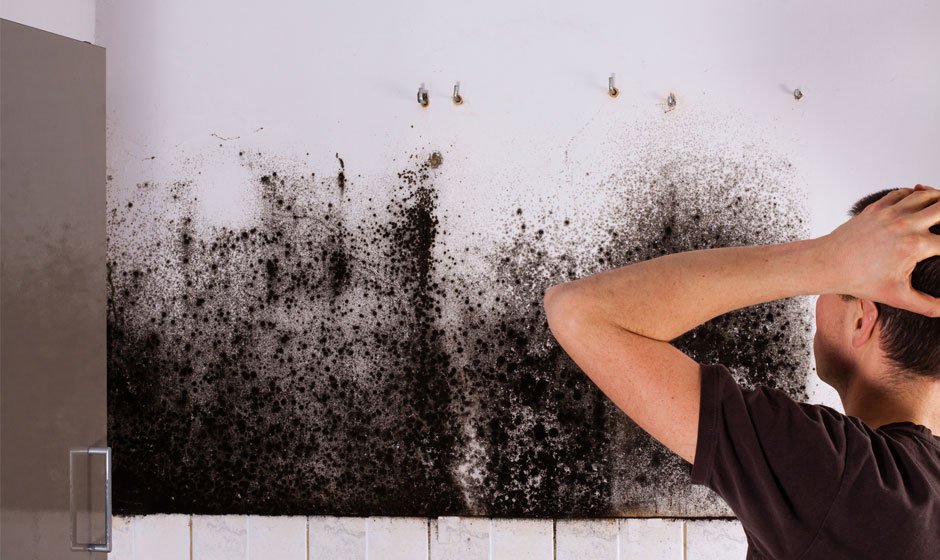How to Tackle Excessive Mold in Your Home

Excessive mold growth in your home is not only unsightly but can also be a health hazard. Mold thrives in damp and humid environments, and if left unchecked, it can lead to various respiratory issues and other health problems.
However, with the right knowledge and action, you can effectively tackle excessive mold in your home. In this comprehensive guide, we’ll explore the causes of mold, and its potential risks, and provide you with 10 practical steps to combat and prevent it.
Understanding Mold
Before we dive into tackling mold, it’s essential to understand what it is and why it can become a problem in your home.
What is Mold?
Mold is a type of fungus that consists of small organisms found nearly everywhere. In your home, it can be found both indoors and outdoors, and it often enters through open windows, doors, or HVAC systems. Mold spores are invisible to the naked eye and can quickly multiply when they find a suitable environment.
Conditions for Mold Growth
Mold requires two primary conditions to thrive: moisture and organic matter. When these conditions are met, mold spores can settle and start growing, leading to excessive mold in your home.
The Risks Associated with Excessive Mold
Excessive mold growth can pose various risks to your health and the structural integrity of your home. Some of the potential risks include:
- Respiratory problems: Mold can produce allergens and irritants that may cause respiratory issues such as coughing, wheezing, and nasal congestion, particularly in individuals with mold allergies.
- Skin irritation: Direct contact with mold or its spores can lead to skin rashes and irritation.
- Eye irritation: Exposure to mold spores can cause red, itchy eyes and other eye-related issues.
- Mold-related illness: Prolonged exposure to mold, especially black mold (Stachybotrys chartarum), has been associated with more severe health problems, including headaches, fatigue, and sinus infections.
- Structural damage: Mold can break down and weaken building materials over time, potentially causing structural damage to your home.
Now that we understand the risks associated with excessive mold growth, let’s explore the practical steps to tackle this issue effectively.
10 Steps to Tackle Excessive Mold in Your Home
1. Identify the source of moisture
The key to dealing with mold is finding and fixing the source of moisture. This can stem from problems like roof leaks, plumbing issues, or poor ventilation. It’s crucial to act swiftly to prevent more mold and damage. If a leaky roof is causing the problem, you might need to replace the roof to stop future mold. If you’re in West Jordan, trustworthy contractors can assist you with this task.
2. Repair water leaks
Water leaks provide the ideal breeding ground for mold. If you have any plumbing leaks or roof leaks, repair them immediately to prevent further moisture from entering your home.
3. Improve ventilation
Proper ventilation can help reduce humidity levels in your home, making it less favorable for mold growth. Install exhaust fans in bathrooms and kitchens and ensure good airflow throughout your house.
4. Control humidity
Maintain indoor humidity levels below 50%. You can achieve this by using a dehumidifier, especially in areas of your home that are prone to moisture.
5. Use mold-resistant products
Consider using mold-resistant paints and materials, especially in areas that are more susceptible to moisture, such as bathrooms and basements. These products are designed to inhibit mold growth.
6. Regular cleaning and disinfecting
Regularly clean and disinfect areas where mold is likely to grow. Use mold-killing products and scrub away any visible mold. Pay special attention to areas like bathrooms and kitchens.
7. Proper insulation
Proper insulation is key to preventing condensation on walls and ceilings, which can lead to mold growth. Ensure your home is well-insulated, and add insulation in areas where needed.
8. Seal cracks and gaps
Seal any cracks and gaps in your home’s structure to prevent moisture from seeping in. This includes windows, doors, and foundation cracks. Use weatherstripping or caulk to seal these areas effectively.
9. Remove and replace moldy materials
In severe cases, you may need to remove and replace materials that are heavily infested with mold, such as drywall, insulation, or carpet. It’s important to do this safely, wearing protective gear and ensuring proper ventilation during the removal process.
10. Seek professional help
If the mold problem is extensive or difficult to manage on your own, consider hiring a professional mold remediation service. These experts have the knowledge and equipment to safely and effectively remove mold from your home.
By following these 10 steps, you can take a proactive approach to tackle excessive mold growth in your home, protecting your health and preserving the integrity of your living space.
Conclusion
Excessive mold growth can be a concerning issue in any home. It not only affects the aesthetics but also poses potential health risks. The good news is that with the right knowledge and action, you can effectively combat and prevent mold in your home.
Start by identifying and addressing the source of moisture, whether it’s a leaky roof, plumbing issue, or poor ventilation. Then, implement measures to control humidity and improve ventilation, such as using dehumidifiers and exhaust fans. Don’t forget to use mold-resistant products, regularly clean and disinfect mold-prone areas, and ensure proper insulation.
In severe cases, be prepared to remove and replace moldy materials, and when necessary, seek professional help from mold remediation experts. With these steps, you can create a healthier, mold-free environment for you and your family. Remember that tackling excessive mold growth is an ongoing process that requires vigilance and maintenance to keep your home safe and mold-free.



